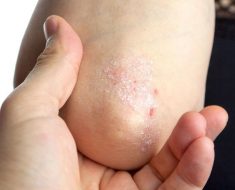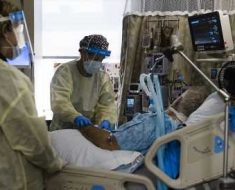Breast tumors with low and intermediate estrogen receptor (ER) expression exhibit immune characteristics that mimic those of triple-negative breast cancer (TNBC), new research suggests.
Researchers from the Netherlands found similar levels of immune factors, such as PD-L1 positivity, in breast tumors with ER expression between 1%-9% and 10%-50%, as well as those with no ER expression. The team also found similar expression of immune-related gene signatures between these groups.
Currently immune checkpoint inhibitor (ICB) therapy is only approved for TNBC, but these findings suggest that breast tumors with varying levels of ER expression may benefit from ICB, the researchers, led by Leonie Voorwerk, MD, PhD, with the Netherlands Cancer Institute, Amsterdam, concluded.
Oncologists responding to the study findings on Twitter highlighted the potential practice-changing implications of the analysis.
“Please stop treating ER low disease like it is standard HR+ breast cancer. It’s not,” tweeted Rebecca Shatsky, MD, oncologist, San Diego, California (@Dr_RShatsky).
William Mantilla, MD, oncologist, Bogota, Columbia (@wilar79), tweeted: “Increasing evidence on similarity between ER low and TNBC. Time to redefine what’s [an] ER negative BC.”
The study was published online May 13 in npj Breast Cancer.
Current guidelines define ER-positive tumors as those with at least 1% ER expression. The cut-off is based on the likelihood that the patient will respond to endocrine treatment, with studies showing a lack of response in tumors with no ER expression.
However, “ER-positive breast cancer represents a very heterogeneous group,” the researchers explained. For instance, ER low-positive (1%-9%) and TNBC tumors have similar progesterone receptor levels, tumor grade, and Ki-67 expression.
Voorwerk and colleagues noted that it remains unclear whether the immune characteristics relevant for ICB response are similar in breast tumors with low or intermediate (10%-50%) ER expression and those with no ER expression (TNBC).
In the current analysis, the Dutch team explored the immune characteristics of breast tumors with varying levels of ER expression and the potential implications for ICB therapy response.
The researchers analyzed primary tumors from 173 patients with HER2-negative breast cancer, focusing on tumors with ER expression between 1% and 99%.
The team found that low ER-positive (1%-9%) and intermediate ER-positive (10%-50%) breast tumors had immune features resembling TNBC (ER 0%), with tumors in these groups exhibiting similar levels of stromal tumor-infiltrating lymphocytes, CD8+ T cells, and PD-L1 expression.
The expression of immune-related gene signatures was also similar between low and intermediate ER-positive tumors and TNBC tumors.
These findings suggest that patients with low and intermediate ER-positive breast cancer might benefit from ICB therapy, challenging the current selection criteria based on ER negativity, Voorwerk and colleagues said.
However, the authors acknowledged, the study is limited by the small sample size of patients with ER low-positive and intermediate-positive tumors. The study also focused on early stage breast tumors, which means the findings can’t be directly applied to the metastatic setting.
Overall, though, the analysis demonstrates that “breast tumors with ER expression between 1[%]-50% have comparable immune characteristics to TNBC with possible implications for inclusion and subgroup analysis in clinical trials with PD-1 blockade,” tweeted Voorwerk.
The study had no commercial funding. Voorwerk reports no relevant financial relationships.
npj Breast Cancer. Published online May 13, 2023. Full text.
For more from Medscape Oncology, join us on Twitter and Facebook.
Source: Read Full Article





